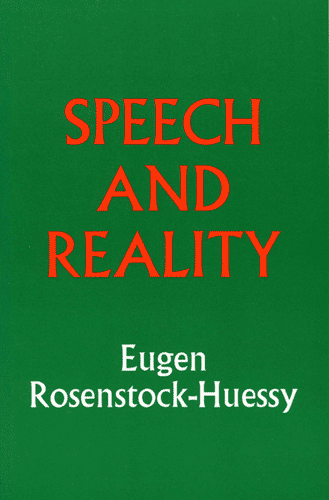Speech and Reality

Speech and Reality contains seven essays that Rosenstock-Huessy wrote and revised between 1935 and 1955. In them he calls for a new age of social research in which the speaking subject displaces the mute object of orthodox sociology and proposes that the new method of inquiry for the social sciences be based on the truths of social grammar. Speech and Reality, which offers his diagnosis of the four possible dangers of unbalanced speech for society (anarchy, revolution, decadence, and war), can be read as an English-language introduction to Rosenstock-Huessy’s sociology
As John Macquarrie wrote in Commonweal:
“The author believes as did Dilthey before him that social sciences must suffer from being forced into the methodological mold of the natural sciences. Anyone acquainted with the kind of psychology and sociology commonly taught in the United States today could hardly fail to agree, and there is in fact currently a good deal of dissatisfaction with the naturalistic model used in these sciences. But where do we look for a better method?
“Rosenstock-Huessy suggests that we look to language. Speech is the basic social reality. Grammar, in turn, is the science which describes and analyzes the structures of language. Hence grammar is the foundation for developing a methodology for the social sciences. It must be added at once that it is not conventional grammar that the author has in mind. The grammar we learn in school and which enables us to reel off conjugations and the like is a grammar which has killed the drama and dignity of living speech. Rosenstock-Huessy has in mind a renewed grammar, a “higher grammar,” as he sometimes calls it, which will attend to the nuances of tense and mood, and will see in these the structures of the social reality…. This book could make very helpful contributions toward working out a more human approach to the study of the human phenomenon.”
Hardbound and paperback, 201 page.
